- Getting around Lijiang. Dont stay in the Old Towns more than 2 days, there is nothing to do. KRISS Oct 9, 2013 05:46
- 2013 Beijing Temple Fair BENNYLAU Feb 26, 2013 03:29
- Malaysian traveling from KUL - LAX vis Shanghai PVG ZATI_DY Jan 3, 2013 20:15
Sea Change_ Xincun 新村
- Views: 6226
- |Vote: 0 0
- |Add to Favorites
- |Recommend to Friends
The small ferry slips noisily through the grid of narrow channels, like streets and lanes, dropping the few other passengers on board where they want to go, turning down others waiting to go ashore because we are on board. The last passenger to leave is our new friend, the woman who directed us down to the harbour after we got off the bus. She is met by an excited barking dog as she waves us goodbye and hurries across the plank walkways. A symphony of boat engines fills the air but never seems intrusive. Shortly, our engine dies and we glide silently alongside a pontoon where we are welcomed ashore.
Standing on the sun bleached timber decking our skipper dips the small net on the end of a long pole into the water. To my surprise up comes a rather large turtle which seems to enjoy all the attention and the photos that we take. Peering into the depths below me, I am astonished at the size of the fish, huge fish, endlessly circling the confines beneath the boards. The bleached open jaws of a small shark hang beside the door of a small open shack. Inside the polished floors are clean and bare.
A rough checkerboard of plank pathways woven between mesh holding pens float atop the brilliantly turquoise waters of the bay. A slight breeze ripples the surface and carries with it familiar smells from the sea. A community of fishermen have knit together this colourful floating tapestry of simple shacks and interwoven decking. Beneath them swims their livelihood in a collection of growing pens in the protected waters of Xincun Bay 新村 港.
Using a variety of boats, they fish the sea for small game or buy it from other fishermen and place it in these ‘backyard’ holding pens where they feed and fatten seafood stocks for the market. What a sight! Boats, ropes, poles, nets, tarps, tanks, floats, tyre fenders, foam, flotsam and jetsam, engines, washing, dogs and outhouses.
Each small shack contains only two or three rooms and surprisingly fewer pieces of furniture. With windows all around, smooth polished floors and hammocks to sleep in, they are cool and comfortable all year round. No need for a flush toilet out here on the water, no need for snorkel gear either. Each family has a pretty pastel painted out-house a step or two from their shack. These quaint little toilet cubicles are open to the sky above and the waters beneath offering fascinating and full colour entertainment on every visit as small brightly coloured fish drift blissfully on the tidal currents beneath the gaping floor.
There’s no buses, cars or even bikes out here and until recently these folk seldom came ashore. These days they use the local ferry – a rather noisy outboard powered boat with bench seats down each side and a canopy overhead. The local fee is a mere five miao per trip from ship to shore or back again regardless of the distance. For school children this means two round trips each day – adding up to Y10 or Y12 a week – but the ferry men often don’t collect the children’s fare.
The fortunes of Xin Cun Bay have been as fickle as the tropical monsoon winds that blow in each year across the South China Sea. During the past twenty years a variety of marine produce has been trialled with varying success. And today, besides a sizeable fleet of sea going fishing vessels, Xincun Bay supports a modest array of sustainable aquaculture that includes fish, prawns, seaweed and cultured pearl oysters. In more recent years tourism has become another major local industry.
Quarters are close but comfortable for these floating families but for the families and crew who live aboard the fishing vessels life is even closer still. Xincun bay is home to a modest sized, varied and colourful fishing fleet. The prettiest boats – if you can call these hard working sea horses pretty - have brightly painted hulls of red, blue, jade green and clear varnished wheel housings. These large two story wheelhouses in the stern have separate cubicles on the lower deck for the crew with kitchens on the after deck, open to the elements where fire would be less of a hazard for a wooden vessel.
Nets are piled high amidships and an assortment of flags flutter off marker buoys while washing dries in the hot summer sun. Often spending days at sea in search of fish many boats are equipped with banks of powerful halogen lights on each side of the wheelhouse to attract schools of fish at night. Only when the fish have schooled around them will the nets be lowered to trap and haul in a catch.
As the name suggests Monkey Island is the home of monkeys – not an island but a peninsular in fact - and a popular tourist attraction for Hainan Island’s growing number of mainland visitors. The peninsula’s many small hills give the allusion of an island which is covered in lush tropical vegetation and surrounded by pretty beaches. An all inclusive ticket access is by boat and by cable car which includes a variety of animal shows including performing monkey’s, parrots and a goat.
The local ferry is the only transport option for curious day trippers like us who want to take a closer look at the Danjia and a flat hourly fee per person comes with a ‘no obligation’ photo stop at the turtle tank and shark shack. The shark is dead and shopping is an optional extra. After a tour around the inner harbour to see the seaweed farms, the night nets, the floating homes and fishing boats there’s time to make a meal of it and enjoy a feast of seafood. Seafood lovers can choose just about anything from the pens - for a price - and have it served up local style or just the way you like it.
Out of season visitors may indulge in both sight seeing and fishing trips outside the harbour on the seaward shore of Monkey Island. Feel like Robinson Crusoe enjoying the sun, sand and sea in the isolation of this deserted stretch of coastline.
Behind the police station – a floating police station of course – we are ‘landed’ at a small family café. There’s room for just four or five tables on their shaded timber deck and after choosing our fish and some prawns the wife and mother of three cooks them just the way we want them. Families of the Danjia are permitted two children without penalty but for their ‘extra’ child they have paid the penalty of Y1000. This, their youngest, is a daughter, with a beautiful beguiling smile. While home from school for lunch she helps to serve our simple but delicious meal. She enjoys living on the water, playing with her dolls and a large stuffed toy like any other girl her age but she dreams of joining the police force when she grows up.
Back on shore the old town of Xincun is also growing and changing. These days most of the streets are paved in concrete apart for the one leading to the harbour that is still flagged in stone. All around town are remnants of the traditional style houses, long and low and narrow built of timber, brick and tile with neatly stacked piles of firewood by the front doors. Holding place of honour in the front room of each home is a small alter. Behind the front ‘parlour’ a door opens into a narrow walled courtyard with the kitchen and storage rooms behind. To one side a narrow ladder leads to the attic roof where sleeping mats on the floor are hung with mosquito nets and the barred open windows draw in a refreshing sea breeze on hot nights.
The floating villages of the Danjia are relatively recent additions to the bay. Our skipper, although not a local ‘dang di de ren 当地的人’, has been in Xincun for more than ten years. He’s enjoying his Sea Change - enjoying the island’s mild climate and easy going lifestyle. His family is just one of several, originally from Jiangxi who work the ferries, making a good living – one that enables him to invest in a bigger and better boat. He’s enjoying a Sea Change that supports his ‘stay at home’ wife and pays for his children’s education. He’s enjoying what many only ever dream of.
Bus from Lingshui
Y5 runs at frequent intervals until about 4.30pm about 20mins
Bus from Sanya There are two options but the Y12 local bus leaving from East Bus Station 东车站 takes less than 2hrs to Lingshui and is the most interesting. Ask to be dropped at the intersection just outside town and catch the Lingshui to Xincun bus or hire a Sanlunche for the 3kms into town.
Ferry leaves from dock Y10 per head per hour and will drop you for lunch and pick up up when finished no extra charge
Monkey Island Y123 includes cable car and all other site fees
Hotels: There are at least three on main street and opposite Cable Car
Room rates between Y100/Y250 double depending on the season or stay in Lingshui Y100 double



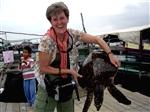
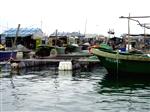
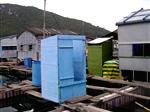
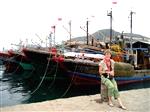
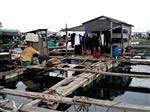
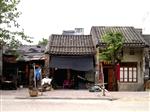
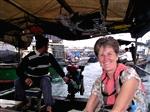
 Copyright © 1998-2025 All rights reserved.
Copyright © 1998-2025 All rights reserved.